Financial turbulence continues to grip Argentina, with the exchange markets underlining the uncertainty among investors and citizens ahead of the upcoming November 14 midterm elections.
The peso slumped last week on the parallel market with the 'dolár blue' at 195 pesos (buy) and 199 (sell) both Thursday and Friday, brushing the 200-peso mark at times.
In the last three weeks the so-called “blue” (parallel) dollar has soared 15 pesos, widening the gap over the official exchange rate and adding to inflationary pressures.
The “blue” dollar has appreciated 21 percent so far this year, outstripping an 18 percent rise in the official exchange rate (99.96 pesos Friday at wholesale level) and doubling it, triggering distortions and impacting other prices in the economy.
Argentina has had capital controls in place since 2019, amid a context of a lack of hard currency in a country without access to international credit markets.
The “blue” dollar started the year at 166 pesos after having climbed as high as 195 pesos in late October last year but tightened currency controls brought it down again.
The official exchange rate at retail level was 105.25 pesos (sell) or 173.66 pesos for savers with the surcharges, while in banks and exchange bureaus the rate was 106.33 pesos.
The alternative exchange rate ‘contado con liquidación’ (also known as the "dólar cable") was going for 181.54 pesos or 81.3 percent ahead of the official exchange rate, as was the MEP (Medio electrónico de pagos, also known as the "dólar Bolsa").
After reopening the frontiers for foreign tourism this week after 19 months of lockdown due to the Covid-19 pandemic, the Central Bank decided to permit tourists to legally exchange up to US$500 at the far more favourable MEP rate (181.32 pesos last Wednesday when the decision was made) after opening an account.
Another closely watched indicator, country risk, stayed above 1,700 points at 1,747 points according to the index of JP Morgan consultants, the highest level since the debt bond swap of September, 2020.
Expectations
The informal or 'blue' market has a scant volume of operations but functions as a sensitive indicator of expectations with crucial midterm elections next weekend when a half of lower house seats and a third of the Senate are at stake.
Analysts speculate about a possible devaluation after the voting, a hypothesis rejected by Economy Minister Martín Guzmán.
In the build-up to next weekend’s elections the Alberto Fernández government has been launching measures seeking to turn around the electoral reverse suffered in the September primaries but the opinion polls are not looking good. The government risks losing its Senate majority while its aspirations for lower house quorum seem uphill.
A devaluation would mean a new blow to the battered purchasing-power of Argentines. According to the latest Central Bank survey, the main consultancies estimate that this year’s inflation will reach 48.2 percent.
Presidential spokesperson Gabriela Cerruti, minimised the rise of the "blue" dollar to the brink of 200 pesos as responding to "political expectations."
"It’s not the dollar going up, it’s the blue in a market which runs according to its own rules and expectations," the official told a Casa Rosada press conference, considering that this parallel market "is reflecting expectations which have more to do with the political than economic situation."
Worried by the daily drainage of reserves, the Central Bank took action, ruling that financial institutions "will have to maintain until the end of the month their overall position in the same level as the monthly average of their daily outlay registered in October or today’s level, whichever is less."
The aim is for the banks not to move those funds which form part of the Central Banks’s statutory reserve requirements and hence its reserves.
– TIMES/AFP/NA





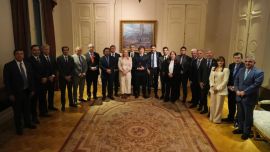

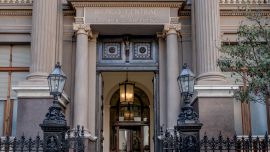







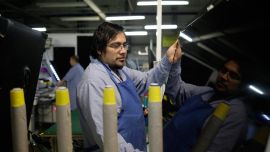


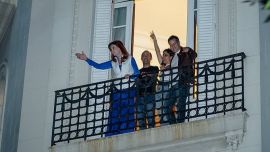
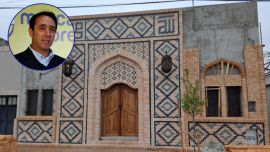
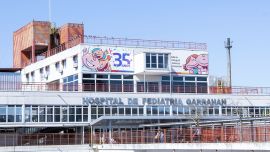

Comments